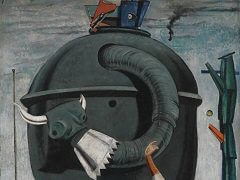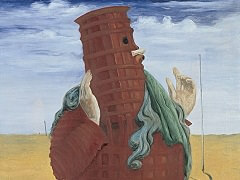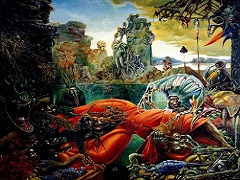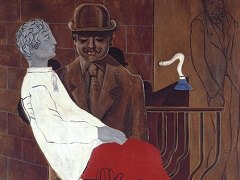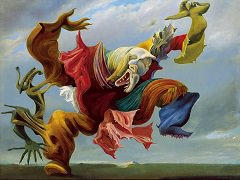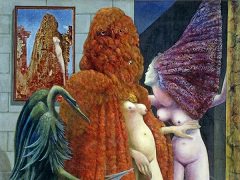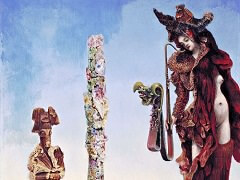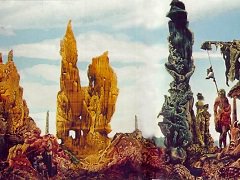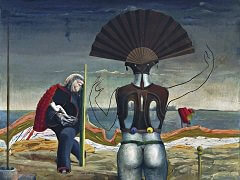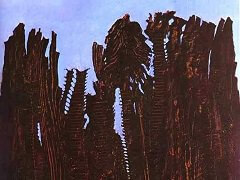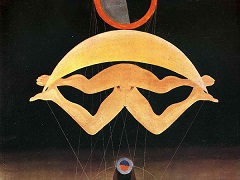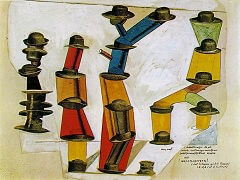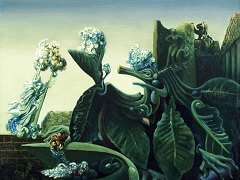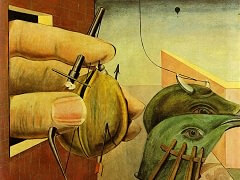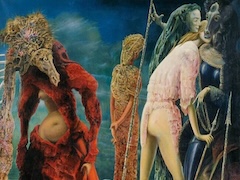The Kiss, 1927 - by Max Ernst
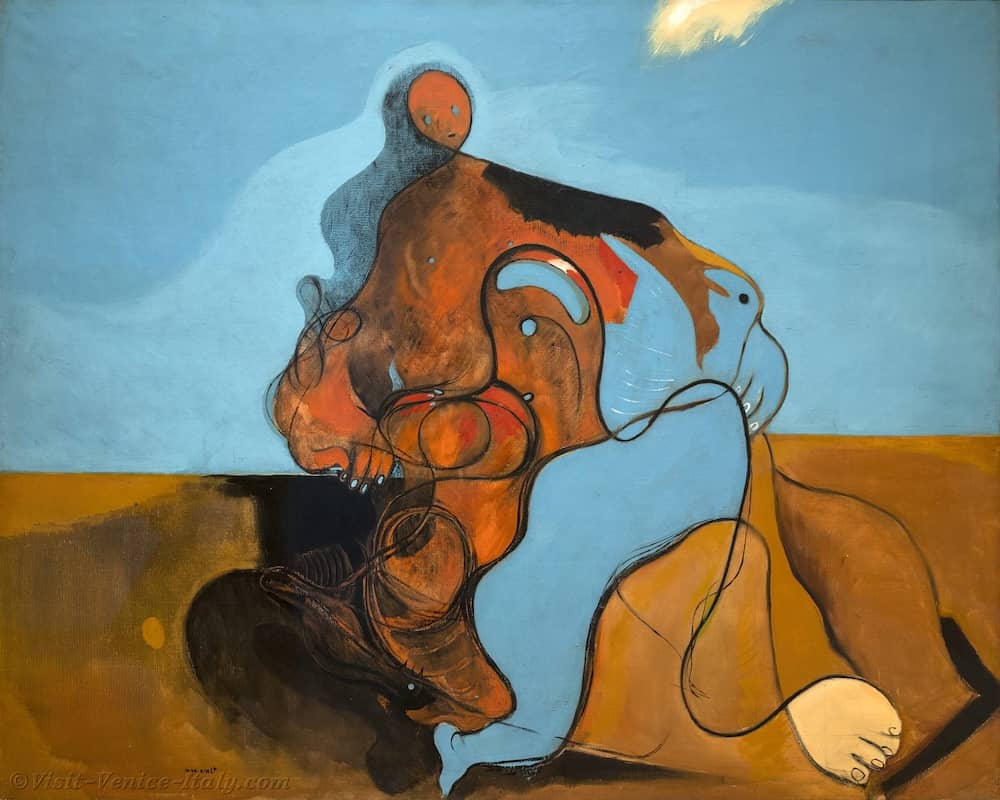
From humorously clinical depictions of erotic events in the Dada period, such as Little Machine Constructed by Minimax Dadamax in Person, Max Ernst moved on to celebrations of uninhibited sexuality in his Surrealist works. His liaison and marriage with the young Marie-Berthe Aurenche in 1927 may have inspired the erotic subject matter of this painting and others of this year. Unlike the romantic scene of The Kiss by Klimt, the major compositional lines of Ernst's work may have been determined by the configurations of string that he dropped on a preparatory surface, a procedure according with Surrealist notions of the importance of chance effects. However, Ernst used a coordinate grid system to transfer his string configurations to canvas, thus subjecting these chance effects to conscious manipulation. Visually, the technique produces undulating calligraphic rhythms, like those traced here against the glowing earth and sky colors.
The centralized, pyramidal grouping and the embracing gesture of the upper figure in The Kiss have lent themselves to comparison with Renaissance compositions, specifically The Virgin and Child with St Anne by Leonardo da Vinci. The Leonardo work was the subject of a psychosexual interpretation by Sigmund Freud, whose writings were important to Ernst and other Surrealists. The adaptation of a religious subject would add an edge of blasphemy to the exuberant lasciviousness of Ernst's picture.

